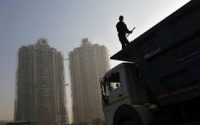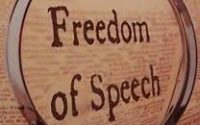Keep off Babri case, Supreme Court tells Swamy and activists
Source – indiatimes.com
NEW DELHI: The Supreme Court on Wednesday ousted BJP leader Subramanian Swamy from being a part of the politically and communally sensitive case relating to the Hindu-Muslim ownership battle over the 2.77 acre Babri Masjid-Ram Janmabhoomi disputed plot.
A bench of Chief Justice Dipak Misra and Justices Ashok Bhushan and S Abdul Nazeer also rejected intervention applications by 17 others along with the one filed by 32 eminent persons, including renowned filmmaker Shyam Benegal, actress Aparna Sen, columnist and writer Anil Dharker and social activist Teesta Setalvad who suggested that the disputed land be put to “secualr use” rather than dividing it on religious lines.
It was an irony of sorts for Swamy, who was instrumental in requesting the SC on March 21 last year for an early hearing of the Ayodhya dispute, triggering an unusual proposal from then CJI J S Khehar-led bench for an amicable negotiated settlement. Putting the dormant issue pending in the SC for seven years on the front burner, Justice Khekhar had even made an offer to be mediator to bring the warring parties to the negotiation table.
But the hype subsided just 10 days later, as on March 31 last year, the bench expressed its anguish at Swamy for not revealing that he was not a party to the land dispute but a mere intervener. On August 11, the SC fixed December 5, 2017 for commencing hearing, but on that day, vociferous protests about early hearing was made by counsel who suggested that it be listed after July 2019. The argument was that the case should be dealt with after the next Lok Sabha elections. It came up for hearing again on February 8 and the SC fixed hearing on March 14.
On Wednesday, all parties — the Sunni Wakf Board and plaintiffs belonging to Muslim community, deity Ram Lalla through guardian Nirmohi Akhara and Uttar Pradesh government — argued in unison that this was a dispute between parties and interveners had no role in the hearing of appeals, which challenged the September 30, 2010 judgment of Allahabad high court deciding the suits pending since 1949 and ruling a three-way equal division of the land between Sunni Wakf Board, the deity and Nirmohi Akhara.
After rejection of his intervention application, Swamy forcefully argued that it was the court which had converted his petition, seeking protection of his fundamental right to worship Lord Ram at his birthplace in Ayodhya, to an intervention application in the main Ayodhya land dispute case. He argued that his fundamental right was superior to the parties’ right over land. “If you are not permitting my intervention, then revive my writ petition,” Swamy said.
The bench agreed, revived Swamy’s petition and said it would be heard separately by “an appropriate bench”. That assuaged Swamy. However, the bench’s firmness not to entertain any non-party before the HC as an intervener saw strenuous attempts by senior advocate C U Singh to keep alive the application filed by 32 eminent persons seeking secular utilisation of the disputed land instead of building a temple or a mosque.
Singh said the country had seen the horrendous effects of communalisation of the issue and these eminent persons suggested a “middle path”. The bench asked, “How can a middle path be found in a land dispute?” With the dismissal of all intervention applications, the SC will now hear only those who were parties before the HC in the title suits.



